Ethanol Manufacturing Process Explained: Key Steps
Have you ever thought about how corn kernels can be converted into fuel? The answer relies on Ethanol, a biofuel used in gasoline mixture as an additive. Also, ethanol improves fuel efficiency and decreases the harmful gases during the combustion. That’s why engineers and agribusinesses seeking sustainable materials are choosing ethanol.
The manufacturing process of Ethanol begins with choosing the preferred feedstocks like corn-based feedstocks. Then, these go through the cleaning and storage section to be prepared for the milling process. Then enzymes and yeast are added to the slurry of starch and water to complete the fermentation and enzymatic hydrolysis till the large polysaccharides are converted to Ethanol and CO2. After all, the beer’s purified and other additives come into the game to create that final product we’ve been looking for.
In this article, we explore a step-by-step guide to ethanol production from feedstocks and fermentation to alcohol recovery, including major equipment and automated technologies, through comprehensive sections.
Feedstocks For Ethanol Production
In the ethanol manufacturing process, two main feedstock types may change the method. For instance, starch-based and sugar-based feedstocks require a shorter production than cellulosic feedstocks.
Starch-based feedstocks
Starch-based feedstocks are derived from grains, whether corn, wheat, sorghum, and barley or root crops like cassava. These materials go through a milling process, whether wet or dry (dry milling is more cost-effective). For instance, in the dry process, we’re dealing with flour fermentation, while the wet-mill process is about the separation of coproducts like Ethanol, corn oil, and starch. (Source: U.S. Department of Energy)
Cellulosic feedstocks: crop residues, wood biomass
Cellulosic feedstocks like wood or grass undergo two primary ethanol production: biochemical and thermochemical processes. The biochemical process involves enzymatic hydrolysis, while the thermochemical process refers to heating materials with chemicals to create syngas and then converting them into Ethanol.
| Aspect | Starch-Based Feedstocks | Cellulosic Feedstocks |
|---|---|---|
| Source Materials | Grains (corn, wheat, barley, sorghum), root crops (cassava) | Crop residues (corn stover, wheat straw), woody biomass, switchgrass, miscanthus, energy cane |
| Main Carbohydrates | Starch (easily hydrolyzed into glucose) | Cellulose & hemicellulose (complex polysaccharides requiring pretreatment) |
| Conversion Process | Dry or wet milling → liquefaction → saccharification → fermentation | Pretreatment → enzymatic hydrolysis (biochemical) or gasification (thermochemical) → fermentation/synthesis |
| Enzymes Used | Alpha-amylase (liquefaction), gluco-amylase (saccharification) | Cellulase, hemicellulose (break down fibrous biomass into fermentable sugars) |
| Process Complexity | Lower; mature infrastructure and efficient process control | Higher; multi-stage conversion, harsher pretreatment, enzyme variability |
| Energy Yield | High ethanol yield per unit of starch; ~2.8 gallons per bushel of corn | Lower yield per dry ton but higher theoretical efficiency when optimized |
| Byproducts & Co-Products | Distillers’ grains (animal feed), corn oil, CO₂ capture | Lignin (burned for power or used in chemicals), CO₂ capture |
| Environmental Impact | Uses food crops; moderate GHG reduction compared to fossil fuels | Uses agricultural/forestry waste or energy crops; significantly lower GHG footprint |
Starch Processing for Ethanol
Over 90% of ethanol production lies in corn-based ethanol via the dry milling process. To begin the manufacturing process of corn-based ethanol, let’s break it into different steps to achieve a base for the enzymatic process.
Grain handling and storage systems
In this part, starchy materials like corn should be prepared for the milling step through cleaning, and for spoilage prevention, automated grain handling systems and silo storing will be practical.
Milling with Hammer and Roller Mills
To ease the enzymatic hydrolysis, whole grains are milled. For example, corn kernels go through hammer mills or roller mills to create such uniform particles. This step directly affects the fermentation result.
Slurry Preparation and Liquefaction Process
According to ScienceDirect, to form a slurry and set up the starch base for the enzymatic hydrolysis, water is added. Then, A-amylose enzymes and the mixture are heated to 90°C in specific tanks to achieve a gelatinized texture for short polysaccharide conversion.
Now, it’s time to dive into the enzymatic hydrolysis tanks; keep reading the following section for more!
Enzymatic Breakdown and Saccharification
Finally, we’ve got to the central step of the ethanol manufacturing process. In this step, larger molecules break into fermentable particles. USDA highlights over 95% of U.S. output of ethanol production is corn-based.
The Powerful Role of Alpha-Amylase and Gluco-Amylase in Ethanol Production
In starch production, enzymes are a game-changer in crushing starches into smaller molecules by applying Alpha-amylase or gluco-amylase in a continuous process. In fact, A-amylase holds the conversion of dextrin, while gluco-amylase breaks dextrin into glucose.
Additionally, these enzymes come from microbial origins, so they’re critically needed for lowering costs and boosting the fermentation yield.
Temperature and Time Control Systems for Optimal Saccharification
To reach the highest yield in enzymatic processes, the temperature must be monitored via automated control systems. These systems are practically used to avoid the denaturation of enzymes during the process to gain such a consistent sugary finish.
Driving the Conversion for Bioethanol Production
The last part before yeast fermentation covers the conversion of starch to sugar particles. Some systems can combine liquefaction and fermentation for cost-effectiveness and time-saving through mixing yeast, starch, and gluco-amylase in simultaneous saccharification and fermentation (SSF).
Fermentation Process in ethanol production
Fermentation is the core section of the ethanol manufacturing process, where sugar molecules turn into ethanol and other co-products. Planning for an efficient fermentation process can shape the future of agribusinesses.
Batch vs. Continuous: Optimizing Yeast Fermentation for Bioethanol Yields
Batch and continuous are two main fermentation methods depending on the productivity level. For simple and small-scale plants, engineers and managers are using continuous fermentation for the best yield.
| Aspect | Batch Fermentation | Continuous Fermentation |
|---|---|---|
| Definition | Discrete cycles with separate processing (Ethanol Production) | Steady sugar input and ethanol output (Ethanol Production) |
| Productivity | Moderate; suits small-scale plants (How Ethanol is Made) | High; ideal for large-scale plants (Ethanol Production) |
| Ethanol Yield | 12–18% v/v (corn); limited by cycle time (Ethanol Production) | 12–18% v/v (corn); higher output (Ethanol Production) |
| Equipment | Basic fermentation tanks (How Ethanol is Made) | Advanced fermentation equipment with automation (Ethanol Production) |
| Complexity | Low; simple for small ethanol plants (Ethanol Production) | High; needs process automation ethanol (Ethanol Production) |
| Cost | Lower setup; higher labor costs (Ethanol Production) | Higher setup; lower operating costs (Ethanol Production) |
| Advantages | Simple, low contamination risk (How Ethanol is Made) | High productivity, less downtime (Ethanol Production) |
| Challenges | Longer cycles, lower throughput (Ethanol Production) | Complex setup, contamination risk (Ethanol Production) |
Engineering Efficiency: Advanced Fermentation Tank Design and Control Systems
The fermentation tanks’ quality matters the most in the ethanol manufacturing process due to their stainless-steel and automated properties, which manage the temperature via cooling systems and control the sugar level via sensors.
Powering Ethanol Output: Alcohol and CO₂ Production Dynamics
The fermentation process refers to the conversion of glucose to about 51% ethanol and 49% CO2 per kilogram of sugar. These characteristics show how this process can impact the economy and the environment.
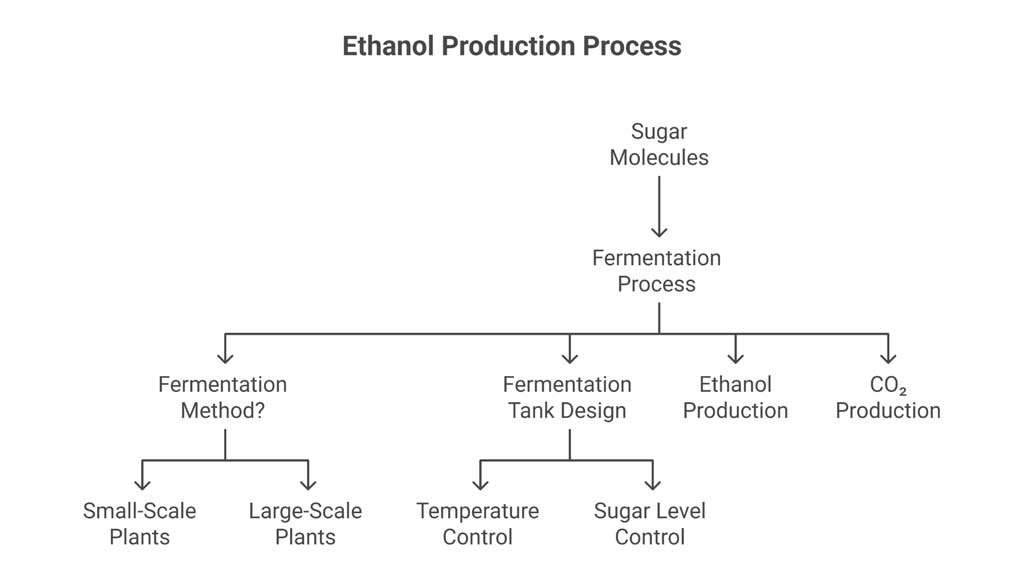
Ethanol Recovery and Purification
After the fermentation process, the fermented broth goes through recovery and purification to reach a biofuel of around 99.5% purity for use in combinations like E10 and E85.
- Distillation to separate ethanol: Distillation is the key part of the ethanol recovery process, in which the ethanol is separated from the beer through automated ethanol systems and temperature monitoring plants. Improving this process by utilizing brand-new machinery indicates the yield range and efficiency in energy usage.
- Dehydration Systems with Molecular Sieves and Membranes: Even after the distillation, there is residual water that should be removed from the ethanol mix to reach the highest purity and fuel-grade standards. During the purification process, molecular sieve dehydration eases the water removal and aids engineers in seeking useful methods in the bioethanol manufacturing process.
- Denaturation Process for Fuel-Grade Ethanol: By mixing additives like denaturants, ethanol is changed to an undrinkable liquid for fuels like gasoline or gas liquids. To prepare ethanol for gasoline aims, it’s denatured in specialized tanks to make sure the brightest results for specific applications.
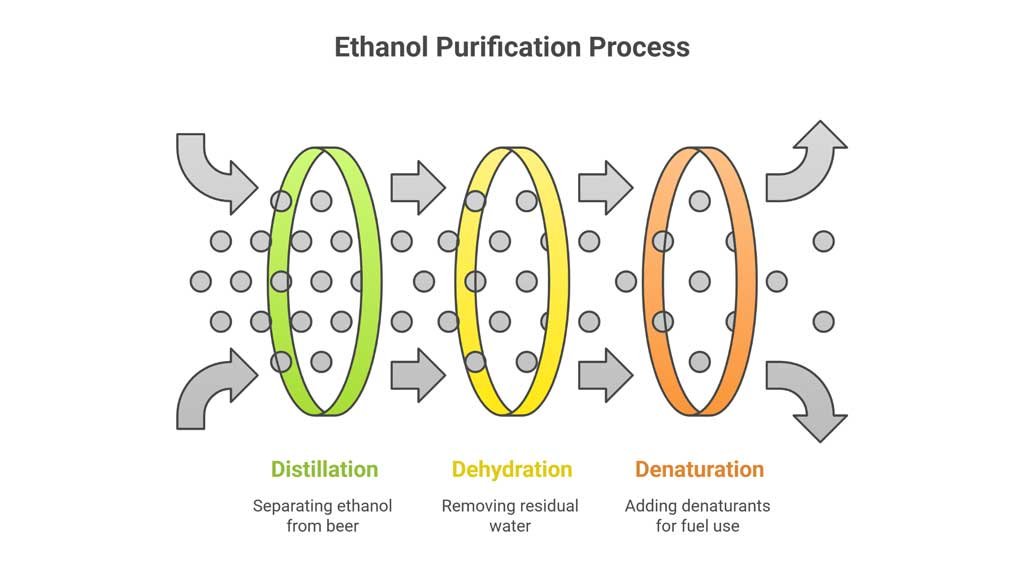
Ethanol’s Co-Product Recovery
Ethanol is not the only product of starch deformation. Co-products like distillers’ grains, corn oil, and CO₂ develop economic aspects of the ethanol manufacturing process. Below, each is explained, including a comparison table:
- Distillers Grains Drying and Separation Systems: The residual matters from the fermentation are dried to make a rich-protein animal feed called distillers dried grains with solubles (DDGS).
- Corn Oil Extraction for Diverse Applications: After the distillation process, there is an amount of corn oil that can be used in the food industry or biodiesel through passing the centrifugal separator’s processing.
- CO₂ Recovery for Industrial Use: as noted in the past section, during the fermentation process, ethanol and CO2 are produced; the CO2 is captured to improve sustainable trends and is used in different industries such as beverages.
| Co-Product | Process | Uses | Value Added |
|---|---|---|---|
| Distillers Grains | Drying and separation into DDGS using rotary drum dryers or centrifuges (Feedstocks & Co-Products) | High-protein animal feed | ~1.69–2.00M tons/month in U.S., boosts livestock market revenue (Feedstocks & Co-Products) |
| Corn Oil | Centrifugal extraction from stillage in dry milling (Ethanol Production) | Food, biodiesel, industrial uses | ~0.4 gal/bushel, enhances plant profitability (Feedstocks & Co-Products) |
| CO₂ | Captured via scrubbers during fermentation (Ethanol Production) | Beverage carbonation, oil recovery | ~0.49 kg/kg ethanol, supports sustainability and revenue (Feedstocks & Co-Products) |
Equipment Integration and Automation
In this new era of technology, bioethanol production has been changed through the equipment integration and automation phase of the ethanol manufacturing process. Modular plant setups, integrated starch and fermentation systems, and process monitoring as game-changers in this complex process:
- Modular plant setups for ethanol production: These production lines are designed in a way to improve flexibility through quick deployment and adaption, whether for large- or small-scale projects.
- Integrated starch and fermentation systems: This single-step system turns starch into ethanol by combining the hydrolysis and fermentation processes in one. These systems need less energy while offering a higher yield
- Process monitoring and energy efficiency features: Monitoring systems are able to control pH, temperature, and fermentation rate to save energy and develop the quality of finished ethanol.
Conclusion
The ethanol manufacturing process converts raw materials into a practical biofuel, powering cleaner energy solutions. From feedstock preparation and fermentation to distillation and co-product recovery, each step utilizes advanced equipment and automation to represent the efficiency and sustainability that recent trends demand.
Also, co-products like distillers’ grains and CO₂ boost economic and environmental considerations. To support agribusinesses and engineers through this automated equipment eases the way of reaching a green future.
FAQs
1- What are the main feedstocks used in the ethanol manufacturing process?
Starch-based feedstocks like corn, wheat, sorghum, barley, and cassava, and cellulosic feedstocks like crop residues and wood biomass.
2- What role does distillation play in ethanol recovery?
Distillation separates ethanol from the fermented broth (“beer”) using automated systems and temperature monitoring to achieve nearly 95% purity.
3- How does automation enhance the ethanol manufacturing process?
Automation in modular plant setups, integrated starch and fermentation systems, and process monitoring controls pH, temperature, and fermentation rates, saving energy and improving ethanol quality.


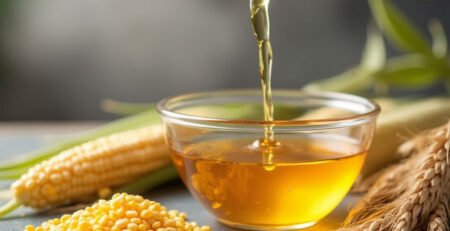
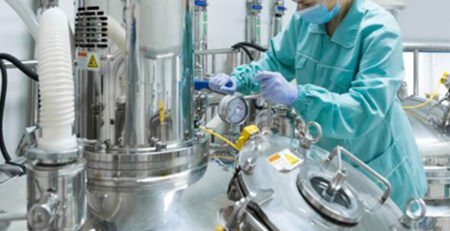
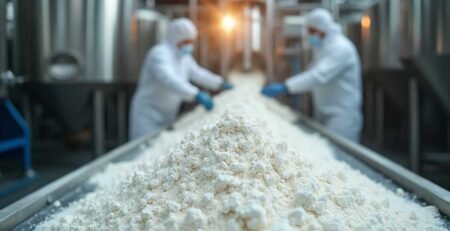
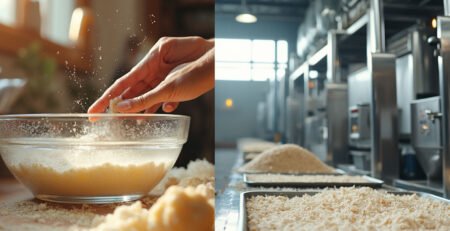
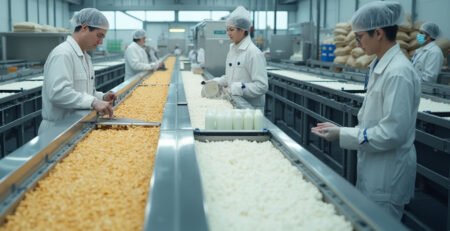
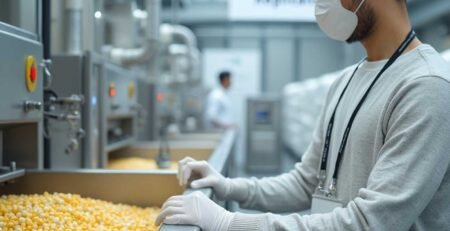
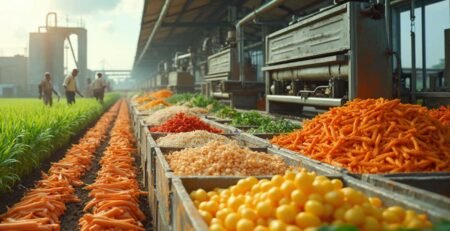
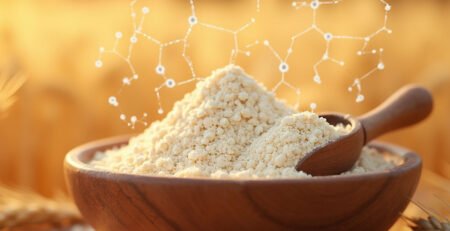
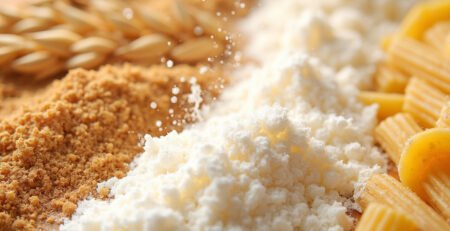
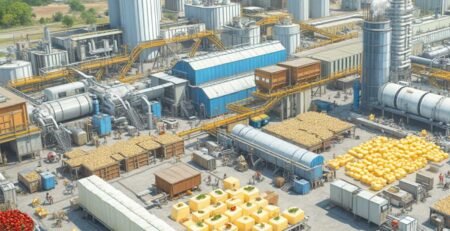
Leave a Reply